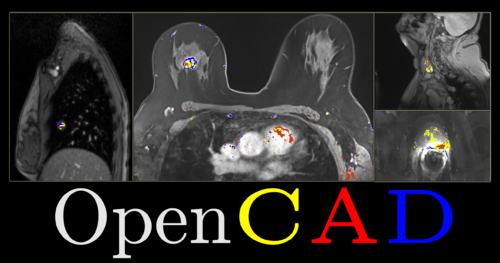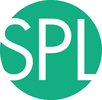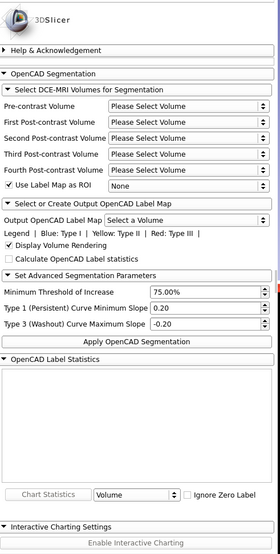Difference between revisions of "Documentation/Nightly/Extensions/OpenCAD"
| Line 3: | Line 3: | ||
{{documentation/{{documentation/version}}/module-header}} | {{documentation/{{documentation/version}}/module-header}} | ||
<!-- ---------------------------- --> | <!-- ---------------------------- --> | ||
| − | + | [[Image:OpenCAD.PNG|thumb|center|500px|]] | |
<!-- ---------------------------- --> | <!-- ---------------------------- --> | ||
{{documentation/{{documentation/version}}/module-section|Introduction and Acknowledgements}} | {{documentation/{{documentation/version}}/module-section|Introduction and Acknowledgements}} | ||
| Line 22: | Line 22: | ||
{{documentation/{{documentation/version}}/module-introduction-end}} | {{documentation/{{documentation/version}}/module-introduction-end}} | ||
| − | <!-- ---------------------------- | + | <!-- ---------------------------- --> |
{{documentation/{{documentation/version}}/module-section|Module Description}} | {{documentation/{{documentation/version}}/module-section|Module Description}} | ||
| − | {{documentation/modulename}} | + | The {{documentation/modulename}} is designed to segment tumors from DCE-MRI datasets which include 1 pre-contrast image and 2-4 post-contrast images at different time points. {{documentation/modulename}} uses blackbox methods to calculate the wash-in and wash-out slopes of the contrast dye based on voxel intensity values. The segmentation output is a Label Map with red, yellow, and blue colors respectively identifying washout, plateau, and persistent voxels. |
| − | |||
| − | |||
| − | |||
| − | |||
| − | + | <!-- | |
| + | Red for washout curve | ||
| + | (Sd < -0.2 | Type III) | ||
| + | Yellow for plateau curve | ||
| + | (-0.2 < Sd < 0.2 | Type II) | ||
| + | Blue for persistent curve | ||
| + | (Sd > 0.2 | Type I) | ||
--> | --> | ||
<!-- ---------------------------- | <!-- ---------------------------- | ||
| − | {{documentation/{{documentation/version}}/module-section| | + | {{documentation/{{documentation/version}}/module-section|Features}} |
| − | + | *Interactive Charting - | |
| − | + | *Volume Rendering - | |
| + | *Label Statistics - | ||
<!-- ---------------------------- --> | <!-- ---------------------------- --> | ||
{{documentation/{{documentation/version}}/module-section|Tutorials}} | {{documentation/{{documentation/version}}/module-section|Tutorials}} | ||
| − | [[Media:OpenCADTutorial.pptx| | + | [[Media:OpenCADTutorial.pptx|{{documentation/modulename}} Tutorial (pptx)]] |
<!-- ---------------------------- --> | <!-- ---------------------------- --> | ||
{{documentation/{{documentation/version}}/module-section|Data sets}} | {{documentation/{{documentation/version}}/module-section|Data sets}} | ||
| − | [[Media:Breast-data1.zip|Breast DCE-MRI Data Set 1 (zip file containing the nrrd volumes for the | + | [[Media:Breast-data1.zip|Breast DCE-MRI Data Set 1 (zip file containing the nrrd volumes for the {{documentation/modulename}} tutorial)]] |
[[Media:Breast-data2.zip|Breast DCE-MRI Data Set 2 (zip file containing additional test set of nrrd volumes)]] | [[Media:Breast-data2.zip|Breast DCE-MRI Data Set 2 (zip file containing additional test set of nrrd volumes)]] | ||
| Line 57: | Line 60: | ||
The GUI of the {{documentation/modulename}} module contains 5 sections: | The GUI of the {{documentation/modulename}} module contains 5 sections: | ||
* '''Select DCE-MRI Volumes for Segmentation''' | * '''Select DCE-MRI Volumes for Segmentation''' | ||
| + | ** '''Pre-contrast Volume:''' | ||
| + | ** '''First Post-contrast Volume:''' | ||
| + | ** '''Second Post-contrast Volume:''' | ||
| + | ** '''Third Post-contrast Volume:''' | ||
| + | ** '''Fourth Post-contrast Volume:''' | ||
| + | ** '''Use Label Map as ROI:''' | ||
* '''Select or Create Output OpenCAD Label Map''' | * '''Select or Create Output OpenCAD Label Map''' | ||
| + | **'''Output OpenCAD Label Map:''' | ||
| + | **'''Legend | |:''' | ||
| + | **'''Display Volume Rendering:''' | ||
| + | **'''Calculate OpenCAD Label statistics:''' | ||
* '''Set Advanced Segmentation Parameters''' | * '''Set Advanced Segmentation Parameters''' | ||
| + | **'''Minimum Threshold of Increase:''' | ||
| + | **'''Type I (Persistent) Curve Minimum Slope:''' | ||
| + | **'''Type 3 (Washout) Curve Maximum Slope:''' | ||
* '''OpenCAD Label Statistics''' | * '''OpenCAD Label Statistics''' | ||
| + | **'''Statistics Table:''' | ||
| + | **'''Chart Statistics:''' | ||
| + | ***'''Menu Items:''' Volume, Curve Type, Voxel Count, Volume mm^3, Volume cc, Minimum Intensity, Maximum Intensity, Mean Intensity, Standard Deviation | ||
| + | ***'''Ignore Zero label:''' | ||
* '''Interactive Charting Settings''' | * '''Interactive Charting Settings''' | ||
| − | |[[Image: | + | **'''Enable/Disable Interactive Charting:''' |
| + | |[[Image:OpenCAD-GUI.png|thumb|280px|{{documentation/modulename}} GUI ]] | ||
|} | |} | ||
Revision as of 19:14, 25 April 2014
Home < Documentation < Nightly < Extensions < OpenCAD
|
For the latest Slicer documentation, visit the read-the-docs. |
Introduction and Acknowledgements
|
This work is supported by NA-MIC, NCIGT, and the Slicer Community. | |||||||
This project is supported by... |
Module Description
The OpenCAD is designed to segment tumors from DCE-MRI datasets which include 1 pre-contrast image and 2-4 post-contrast images at different time points. OpenCAD uses blackbox methods to calculate the wash-in and wash-out slopes of the contrast dye based on voxel intensity values. The segmentation output is a Label Map with red, yellow, and blue colors respectively identifying washout, plateau, and persistent voxels.
Tutorials
Data sets
Breast DCE-MRI Data Set 1 (zip file containing the nrrd volumes for the OpenCAD tutorial)
Breast DCE-MRI Data Set 2 (zip file containing additional test set of nrrd volumes)
Liver DCE-MRI Data Set 1 (zip file containing additional test set of nrrd volumes)
Panels and their use
|
The GUI of the OpenCAD module contains 5 sections:
|
Similar Modules
N/A
References
N/A
Information for Developers
| Section under construction. |
Source code: https://github.com/vnarayan13/Slicer-OpenCAD




